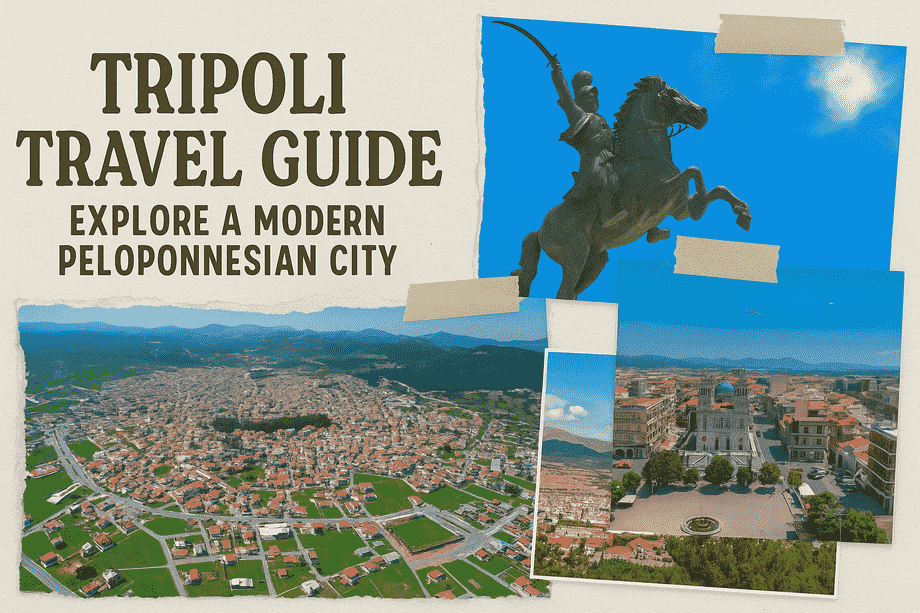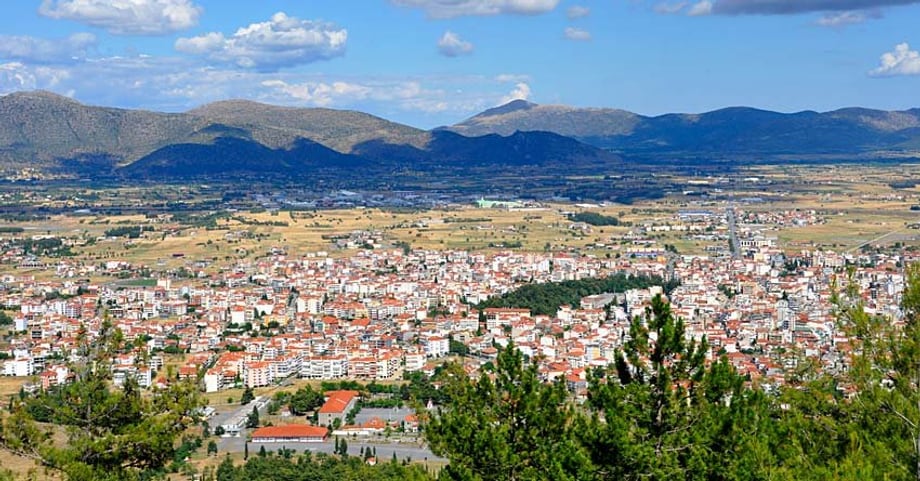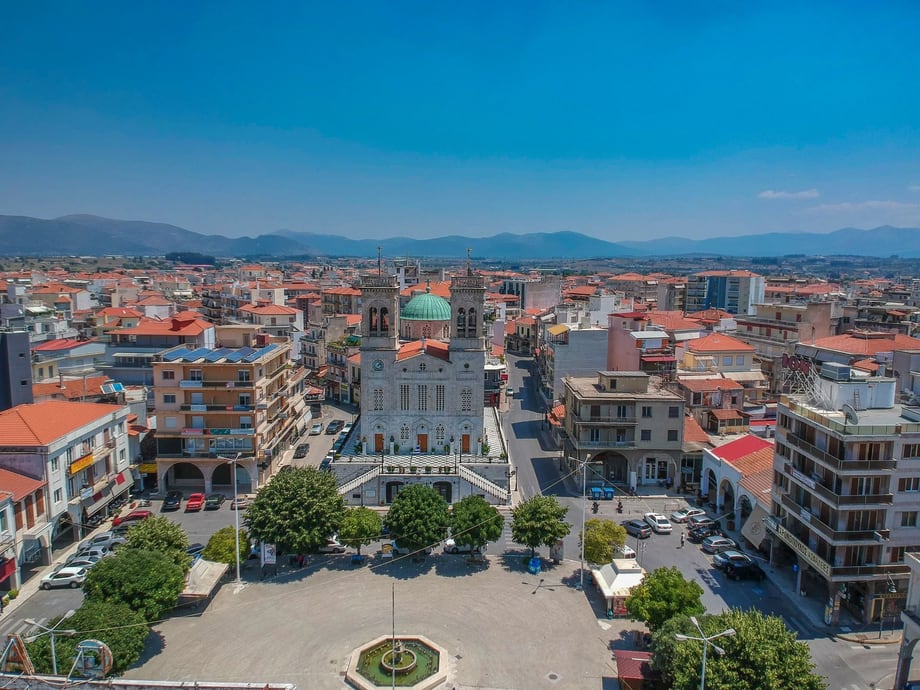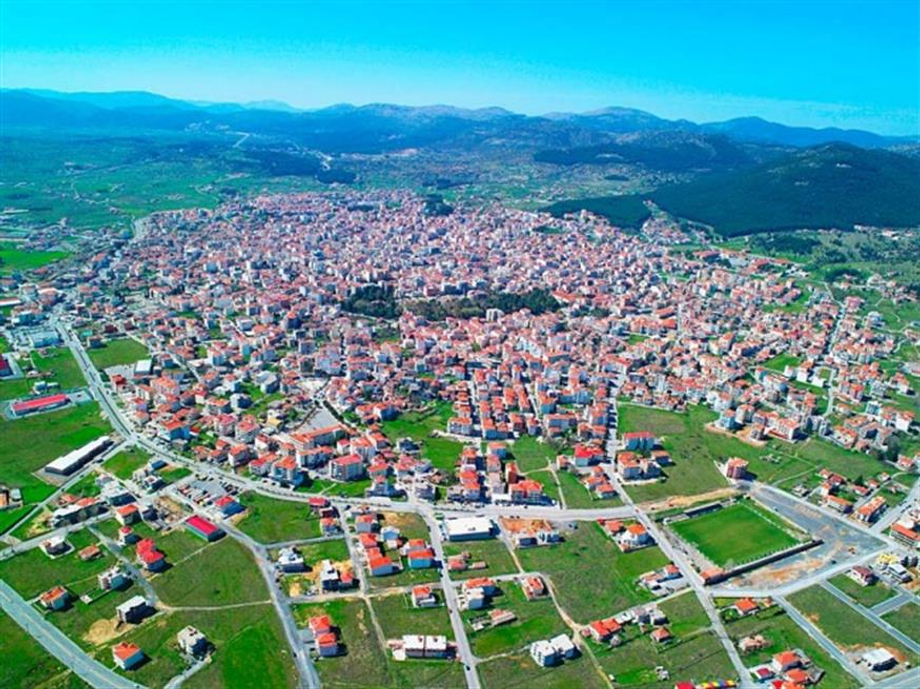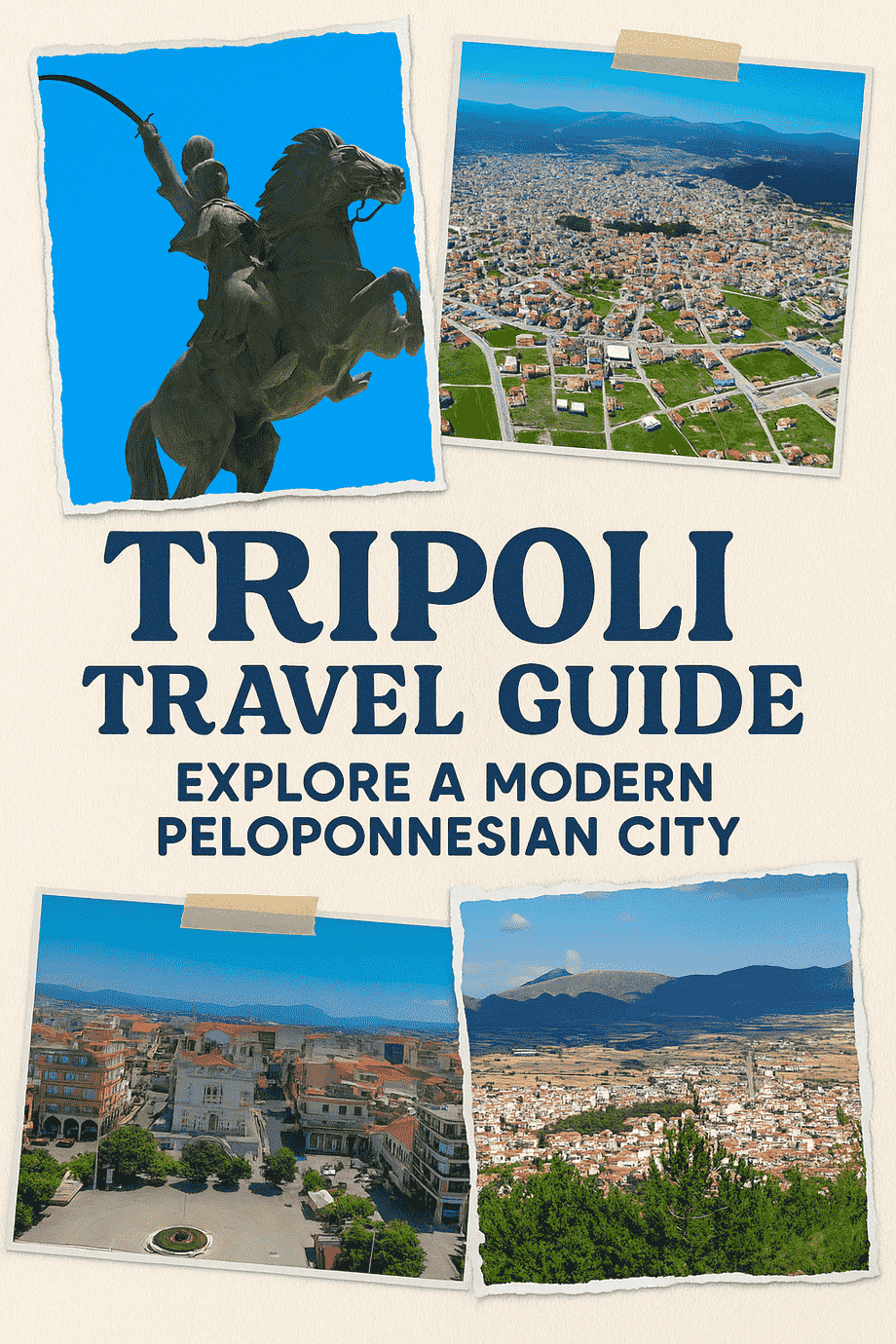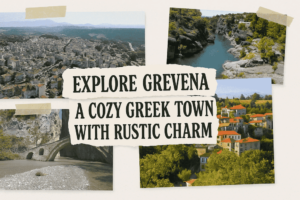Tripoli Travel Guide: Explore a Modern Peloponnesian City
Welcome to Tripoli, a city often overshadowed by Greece’s more famous coastal towns, yet quietly preserving the soul of the Peloponnese. Nestled in the heart of the peninsula, Tripoli isn’t the ancient city of Libya’s fame, but rather a lively, modern Greek town surrounded by mountains, myths, and moments of real local charm. If you’re looking to uncover a different Greece — authentic, uncrowded, and full of history — Tripoli is where you should head next.
Where Is Tripoli and Why Visit?
Tripoli is located in the central Peloponnese, at the foot of Mount Mainalo, and about two hours’ drive from Athens. It’s the administrative center of Arcadia, a region known for its rugged beauty, traditional villages, and mythological heritage. What makes Tripoli truly special is how it blends modern Greek life with deep historical roots. It’s a city of students, workers, and families — not tourists. That’s exactly the charm. You get to experience real Greece, away from the cruise ships and Instagram mobs.
Getting to Tripoli
The easiest way to reach Tripoli is by car. From Athens, the journey takes around 2 hours via the A7 motorway. There are also intercity buses (KTEL) that connect Tripoli with Athens, Kalamata, Sparta, and Patras. The bus ride is comfortable, relatively inexpensive, and gives you great views of the Peloponnesian countryside.
When to Go
Spring and autumn are perfect. In April, the surrounding mountains are green, and wildflowers paint the fields. October brings crisp air and golden leaves, making the city cozy and atmospheric. Summers are warm but less crowded compared to coastal destinations. Winters can be surprisingly cold, even snowy, which makes Tripoli a base for nearby mountain escapes and ski adventures in Mainalo.
What to Expect from the City
Tripoli is a medium-sized city with a population of around 30,000 people. It feels neither too small nor too big. There’s a central square, bustling cafés, historical buildings, and a compact old town with stone alleys and neoclassical facades. The pace is relaxed. Locals still enjoy their coffee slowly. Shops close for siesta. The food is hearty, traditional, and fresh. It’s not about flashy attractions — it’s about discovering local life in its unpolished, everyday beauty.
Main Sights in Tripoli
Areos Square
The city’s main square is where everything starts. It’s surrounded by cafés, restaurants, and government buildings. In the center, you’ll find a statue of Theodoros Kolokotronis, the great general of the Greek War of Independence. Sit at a café, sip on a freddo espresso, and enjoy the people-watching.
War Museum of Tripoli
Just off Areos Square, the War Museum is housed in a beautiful 19th-century building. It focuses on the Greek War of Independence, especially the role played by local heroes like Kolokotronis. The museum is compact, but very informative, with military uniforms, weapons, and paintings.
Agios Vasilios Cathedral
This is the spiritual heart of Tripoli. Built in the early 20th century, it dominates the skyline with its twin towers. Step inside to admire its beautiful frescoes and quiet atmosphere. It’s a peaceful break during a walk around town.
Tripoli Old Town
The old part of Tripoli is a maze of narrow streets, traditional houses, hidden courtyards, and small local shops. It’s perfect for wandering without a map. You’ll find bakeries with sesame koulouri, small churches, and friendly locals always ready to help.
Archaeological Museum of Tripoli
This lesser-known museum is worth visiting if you’re interested in local history. The collection includes sculptures, inscriptions, and everyday objects from the wider Arcadian region. The building itself is a neoclassical gem, designed by Ernst Ziller.
Day Trips from Tripoli
Stemnitsa and Dimitsana
Just a 45-minute drive from Tripoli, these two stone-built mountain villages are among the most beautiful in Greece. Stemnitsa is known for its silversmithing tradition, while Dimitsana boasts dramatic mountain views and a fascinating Open-Air Water Power Museum. Both offer cozy guesthouses, scenic walks, and fantastic local food.
Mainalo Mountain
Mount Mainalo is a paradise for nature lovers. In the warmer months, it’s ideal for hiking, with trails leading through fir forests, over ridges, and past old monasteries. In winter, the Mainalon Ski Center opens for skiing and snowboarding. Even if you don’t ski, the snowy landscapes are magical.
Ancient Mantinea and Tegea
These archaeological sites lie just 10–15 minutes from Tripoli. They’re quiet, open-air ruins surrounded by olive groves and fields. Mantinea has a fascinating ancient theater and some unique temple structures. Tegea, once a powerful city-state, offers a serene, almost spiritual atmosphere with its partially preserved temples.
Kapsia Cave
One of the most beautiful caves in Greece, Kapsia Cave is located just 15 km north of Tripoli. Guided tours take you through colorful chambers filled with stalactites and stalagmites. It’s a surreal, otherworldly experience.
Food in Tripoli
Local Cuisine
Tripoli is part of Arcadia, where the food is mountain-style: meaty, rich, and seasonal. Pork with celery, goat stew, wild greens pies, and oven-baked lamb are all staples. You’ll also find sweet treats like diples (fried dough with honey and cinnamon) and galaktoboureko (custard pie with syrup).
Where to Eat
Oinomageiremata – A local favorite with traditional Greek dishes and a cozy tavern feel. Great for lunch after sightseeing.
Archontiko – A more upscale option with beautiful ambiance and creative takes on Arcadian cuisine.
Kentrikon – A long-standing café-bar on Areos Square, perfect for drinks, desserts, and people-watching.
Klimataria – Located just outside the city, this countryside taverna serves hearty meals under vine leaves.
Nightlife and Local Life
Tripoli isn’t known for wild parties, but it has a vibrant café and bar scene, thanks to its university students. At night, people gather in bars around the central square and side streets. Music is Greek, drinks are strong, and the vibe is friendly. You’ll quickly feel part of the community.
Shopping and Local Products
You won’t find big shopping malls here. But you will discover handmade jewelry, textiles, and woodcrafts from local artisans. Honey from Arcadia is top quality — pick some up at local markets. Olive oil, wine, mountain tea, and herbs are also great souvenirs. Try the local liqueur made with mountain herbs — strong and aromatic.
Where to Stay in Tripoli
Budget Options
Arcadia Hotel – Centrally located, clean rooms, and great value for money.
Tripoli Rooms – Simple guesthouse with friendly hosts and excellent location.
Mid-Range
Mainalon Resort – Right on Areos Square, offering comfortable rooms, mountain views, and a central position.
Ceragio Hotel & Apartments – Modern amenities, cozy atmosphere, and walkable to all main sights.
For a Unique Experience
Stay in a nearby village like Levidi or Vytina for a more traditional stay in stone-built guesthouses with fireplaces and homemade breakfasts.
Practical Tips
Most locals speak at least basic English, especially younger people. Credit cards are widely accepted, but carry some cash for smaller shops and rural areas. The city is walkable, and parking is generally easy. Dress in layers — weather can change fast in the mountains. Public transport is limited for day trips, so consider renting a car.
Events and Festivals
Tripoli hosts several local events throughout the year. In March, celebrations for Greek Independence Day are particularly important here, honoring Kolokotronis. Summer brings concerts and outdoor theater at the small open-air theater in the city. Autumn is harvest season — perfect for tasting fresh wine and chestnuts in nearby villages.
Why Tripoli Is Worth Your Time
Tripoli doesn’t try to impress. It doesn’t show off. But that’s its secret. It’s a gateway to undiscovered villages, forgotten ruins, and slow, meaningful travel. You can enjoy modern Greek life without the pretense. Whether you’re here for a weekend break or using it as a base to explore Arcadia, Tripoli rewards the curious. It’s real, raw, and waiting.

